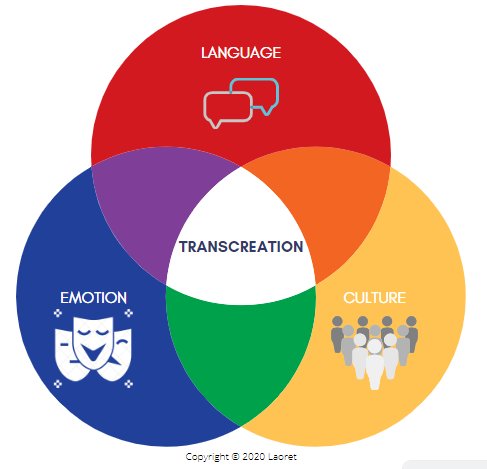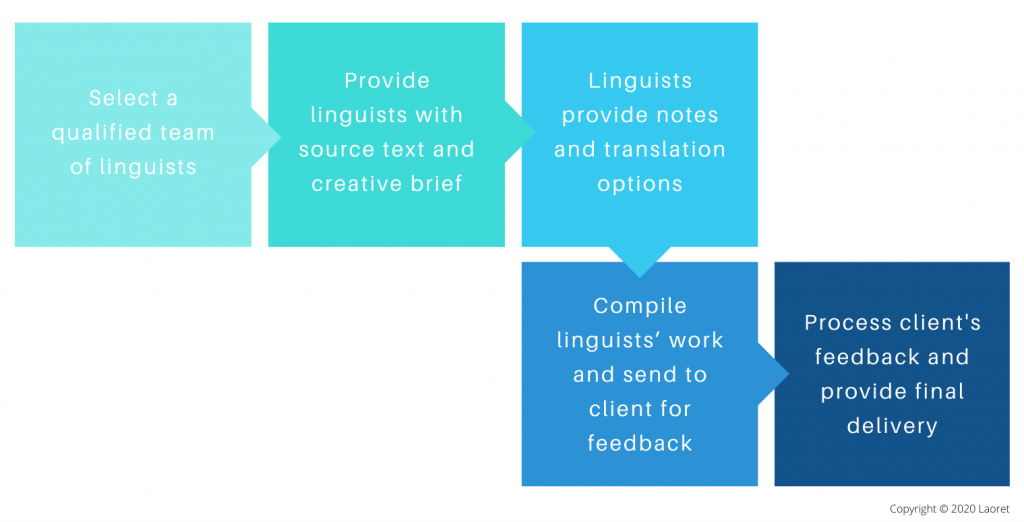What Is Transcreation And How Is It Best Managed?
Do you remember Nike’s Just Do It? Of course, you do. Everyone does. Even more, the world remembers it. In their research into how Nike so effectively applied their marketing strategies across various cultures, marketing expert WARC, expands on the value of truly understanding the inner workings of culture in the export of ideas, values, and products.
This is where transcreation holds its real power. Because more than just translating a text, Transcreation is more about transforming your marketing messages and connecting with your target audience. Let us expand on what transcreation really is, how it is most effectively executed, and when you should apply it as a global expansion strategy.
Translation Or Transcreation? What Is The Difference?
Transcreation combines the words Translation and Creation. So in a way, you may want to think of Transcreation as Translation Plus. This Plus includes linguistic creativity, emotion, and cultural potency.

To put it in other words, transcreation is the process of translating content to another culture as well as another language. Rather than adhering to the word for word translation of the source language, transcreation opens the door to some freedom and liberty to move away from the source text. This becomes particularly useful in situations where the content needs to do more than inform. It needs to engage.
Transcreation And Its Best Practices
Much like any other type of translation process, transcreation must be subjected to a streamlined workflow in order to achieve the best results. Before jumping into specific transcreation challenges and the industries where this service can truly work its magic, let’s have a look at what an ideal workflow looks like:
- Select qualified linguists for each language. Remember, transcreation is a creative process. By using more than one linguist, you enable a dialogue between experts.
- Provide the linguists with the source text and the creative brief. Clients will always have some specific suggestions or guidelines to make sure the output communicates with their own brand identity. Linguists need to find a way to bring the client’s needs and the demands of the target locale together.
- Have the linguists create a document where they determine key terminology, expressions and provide context around the intent, usage, meaning and cultural references based on the client’s brief and own expertise. The linguists provide notes, insights and several translation options for the client to review.
- Compile the linguists™ insights and translations and send them to the client for feedback.
- After receiving the clients feedback, the transcreation can be finalized and delivered.

The Creative Brief Is A Key-Element Of your Transcreation Project Success
When executing a transcreation project, you have two options. First, you can assign it to your Language Service Provider and hope that the end-result will align with your expectations. But, in most cases, things don’t work out the way you want them too. If you do decide to go down this road, make sure to request a sample to ascertain the quality level and gain some insights into what the outcome will look like.
The second option, is to devote some time into composing a Creative Brief for your LSP or Linguistic team. This will help them understand your expectations and improve the project’s success significantly.
No idea how to get started on a Creative Brief? No worries. Here are some questions to ask yourself that will help you sculpt a basic brief for your project.
- Who is the target audience? Are they General, Knowledgeable, or Expert?
- Content formality: Is it informal, neutral, or formal?
- Would you be willing to provide a specific content structure or outline with the core-elements you would need to be covered in your transcreated content?
- Content domain: Is it business, general, technical, casual, or creative?
- What’s the tone of voice? Neural, Confident, Joyful, Optimistic, Friendly, Urgent, Analytical, or Respectful?
- Tone and style: What kind of feeling/vibe do you want the new pieces to have?
- What’s the intent? Inform, describe, convince, or tell a story?
- Call to action: What do you want your audience to do as a result of the copy?
- Can you tell us more about your business and its value propositions?
- Keywords: would you like us to include specific keywords in the text for SEO purposes?
- Do you have any preferences or constraints for the new content length/word count?
- Who are your competitors?
- Do you have any references available? ideally a relevant piece of content/website that you like
Remember, Transcreation Projects are charged by the hour and the productivity output may vary based on several factors including complexity, industry, instructions, etc. So, by providing a creative brief you are not only aligning the expectations and objectives, but also helping your Linguistic team or LSP to better estimate the overall cost of your projects and how many hours it will take to get it done.
Challenges On The Global Stage
When it comes to the linguistic and cultural roadblocks that need to be removed, transcreation is particularly useful in marketing and advertising. Marketing campaigns aim to move people to action, and the only way to achieve that is by speaking their language on every level.
The most common challenges to overcome are:
- Cultural Validity: A lot of marketing and advertising campaigns use specific cultural references to connect with their audience. Sometimes, this reference relates to the country’s linguistic heritage in the use of slang. Other times, even pop culture references sneak in. Just think about Norton’s Boldly Go, referencing Star Trek. Transcreation ensures that these references are not lost to the target markets and if there is no cultural validity to the pop culture references itself, effective alternatives are found.
- Tone of voice: When we think about what it is that makes a phrase or text powerful, it often lies in what the words suggest rather than what they are literally saying. Take Nike’s above-mentioned Just Do It. More than just telling you to just go ahead and buy their sneakers, they are suggesting the pumped sensation you get prior to workouts. What kind of tagline would summon the same sensation for your target audience?
- Layout: Words are always carried by a visual backdrop that supports the message. Here too, think about what would be effective in terms of photos, actors, colors, and even suitability to the written word. The above-mentioned Norton and their Boldly Go, played visual games with the letter O. Depending on the translation, you may have to find a way to create a visually effective product using different letters.






